英语语言学第二章讲课PPT
- 格式:ppt
- 大小:122.50 KB
- 文档页数:38
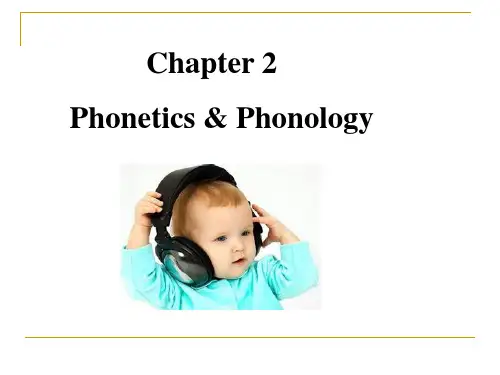

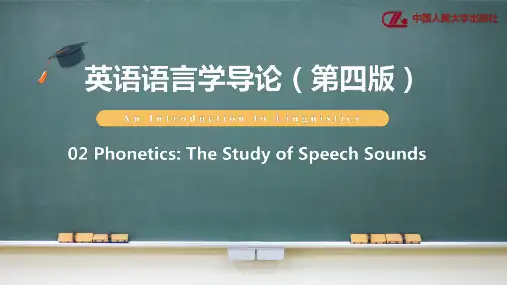
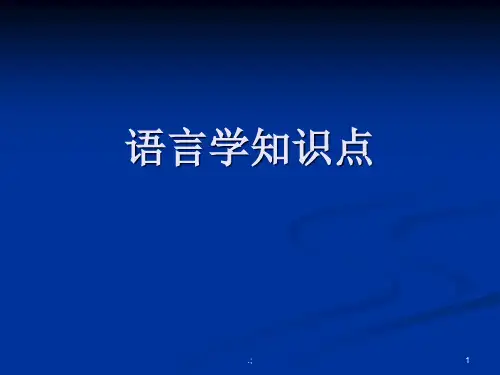
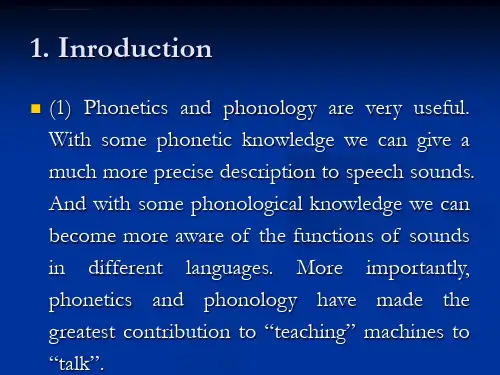
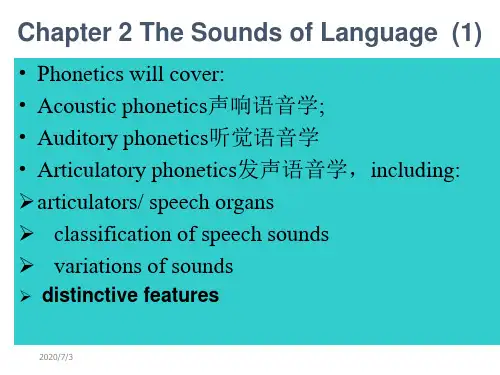
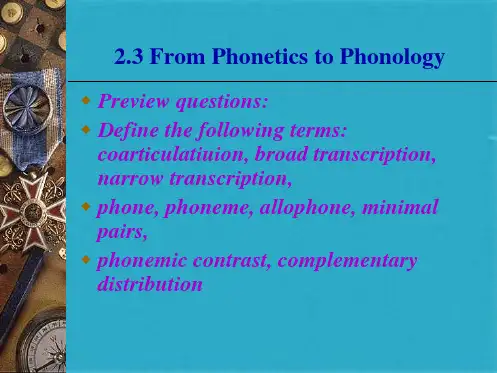
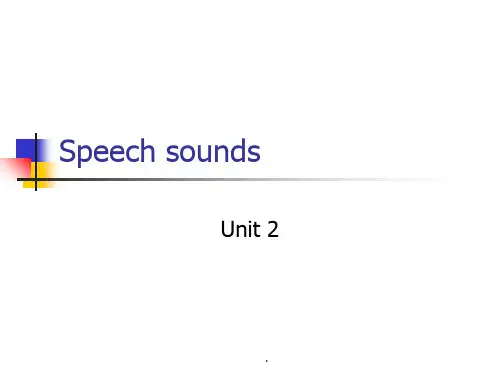
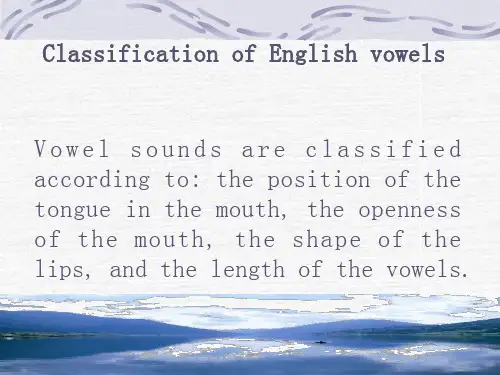
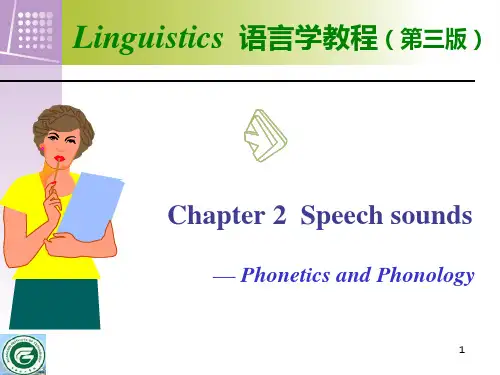

A New Seaghsounds of spoken English≠letters of written English↓InternationalPhonetic Alphabet →IPAIPA is a standardized and internally accepted system of phonetic transcription.Its basic principle is using a different letter for each distinguishable speech sounds. With minor modification it is now still used by phoneticians and linguists.The International Phonetic Alphabet (Revised to 2005)only some of the sounds →units in the language system.study from various perspectives ↓PhoneticsPhonologyPhonetics -studies how speech sounds are produced, transmitted, and perceived.Articulatory Phonetics- the study of the production of speech sounds.Acoustic Phonetics- the study of the physical properties of speech sounds. Perceptual or Auditory Phonetics - concerned with the perception of speech sounds.- the study of the sound patterns and sound systems of languages. Aim- discover the principles that govern the way sounds are organized in languages, and to explain the variations that occur.1- analyze an individual language, say English, in order to determine itsphonological structure, i.e. whichsound units are used and how they are put together.2- compare the properties of sound systems in different languages in order to make hypotheses about the rulesthat underlie the use of sounds inthem, and3- ultimately discover the rules that underlie the sound patterns of alllanguages.nasal cavityoral cavitypharyngealcavityThe three resonating cavitiesSpeech Organs 1.lips 2.teeth 3.teeth ridge (alveolar) 4.hard palate 5.soft palate (velum) 6.uvula 7.tip of the tongue 8.blade of the tongue 9.front of the tongue 10.back of the tongue11.vocal cords1 2 1 234 567 8 910 11MouthConsonants are produced ‘by a closure in the vocal tract, or by a narrowing which is so marked that air cannot escape without producing audible friction’.By contrast, a vowel is produced without such ‘stricture’ so that ‘air escapes in a relatively unimpeded way through the mouth or nose’.The distinction between vowels and consonants lies in the obstruction of airstream.As there is no obstruction of air in the production of vowels, the description of the consonants and vowels cannot be done along the same lines.The place of articulation refers to the point where a consonant is made.Consonants - any place between the lips and the vocal folds.Bilabial双唇音*[w] tongue body raises to velum →labia-velar[f], [v]Upper teeth & Lower lip 唇齿音[ð], [θ]Tongue tip/blade & teeth 齿音[t], [d], [s], [z], [n], [l] , [ ]tongue tip/blade&alveolar ridge齿龈音[ſ],[3],([tſ],[d3])tongue tip&back of the alveolar ridge 后齿龈音[j][k], [g], [η], [w] [h] Palatal 硬腭音Velars 软腭音Glottal 声门音[ ] - 书[ u] [ ][ ] [ ] Retroflex 卷舌音Uvular 小舌音Pharyngeal喉音Place of Articulation Bilabial [p], [b], [m], [w] Labiodental [f], [v]Dental [ð], [θ]Alveolar [t], [d], [s], [z], [n], [l], Post-alveolar [ſ], [3],Palatal [j]Velar [k], [g], [η], [w] Glottal [h]RetroflexUvularPharyngealComplete closure(articulators)→ airstreamcannot escapethrough themouth.1.Closing phasepression3.release [p], [b], [k], [g], [t], [d]爆破音(plosive)Most sounds are produced orally, with the velum raised, preventing air flow from entering the nasal cavity. However, when the velum is lowered and the airstream is allowed to flow out through the nose to produce sounds -nasals. [m][n][η]鼻音air stream partially obstructed and turbulent airflow is produced [f], [v] [ð], [θ] [s], [z] [ſ], [3] [h]摩擦音one articulator is close to another, but without the vocal tract being narrowed for turbulent air stream[w][j]无摩擦延续音(半元音)obstruction in the incomplete closure between one or both sides of the tongue and the roof of the mouth [l]边音塞擦音a stop followedimmediately by africativean articulator is set vibrating by the airstream [r] ( )颤音only one vibration is produced [ ]触音/闪音[p] [b] [f] [v] [m] Voiceless bilabial stopVoiced bilabial stopVoiceless labiodental fricative Voiced labiodental fricative Bilabial nasal。